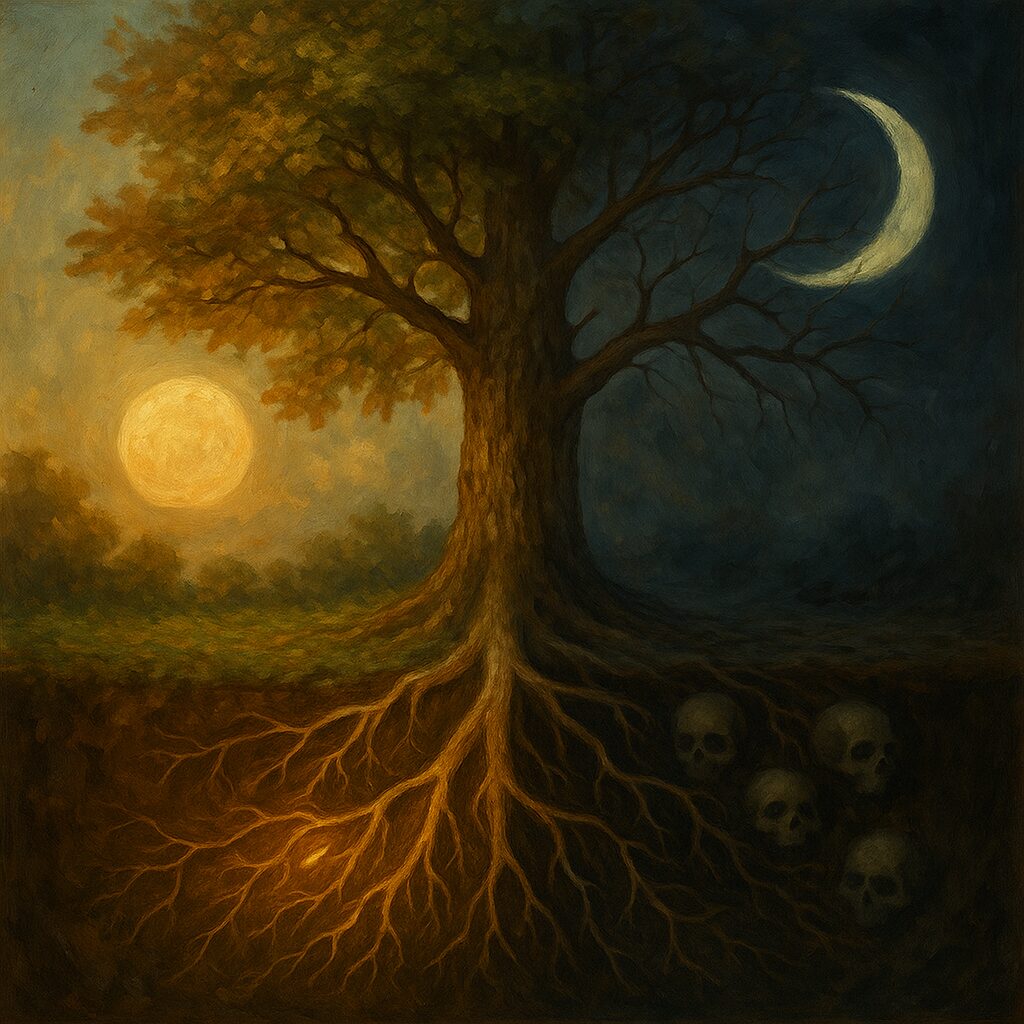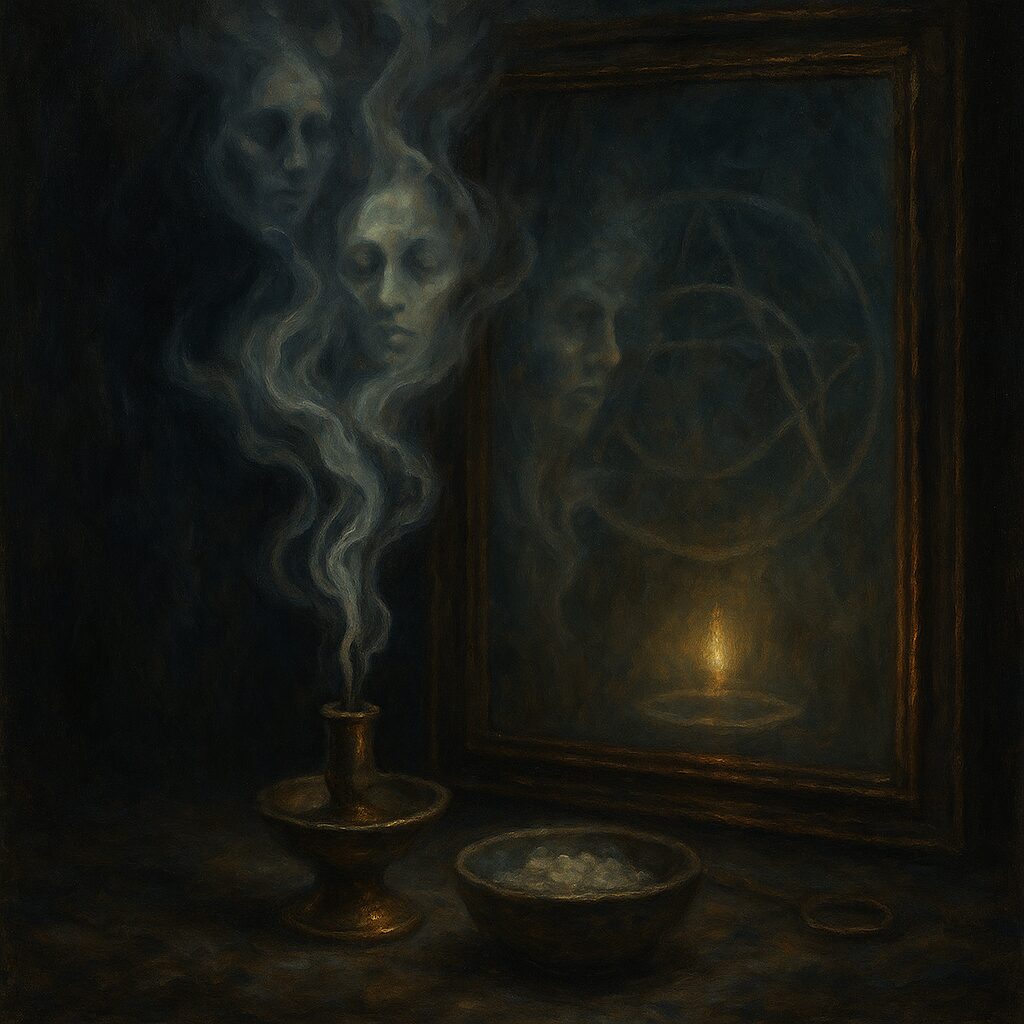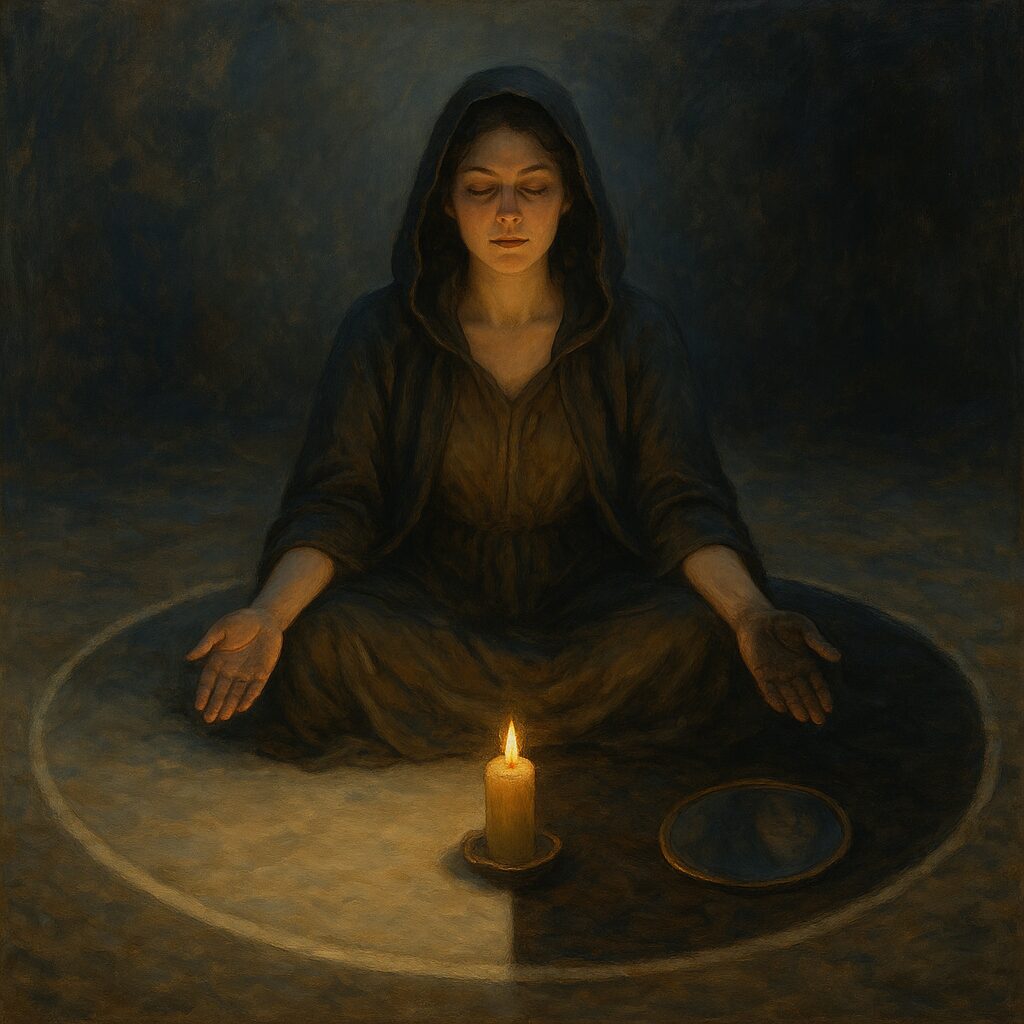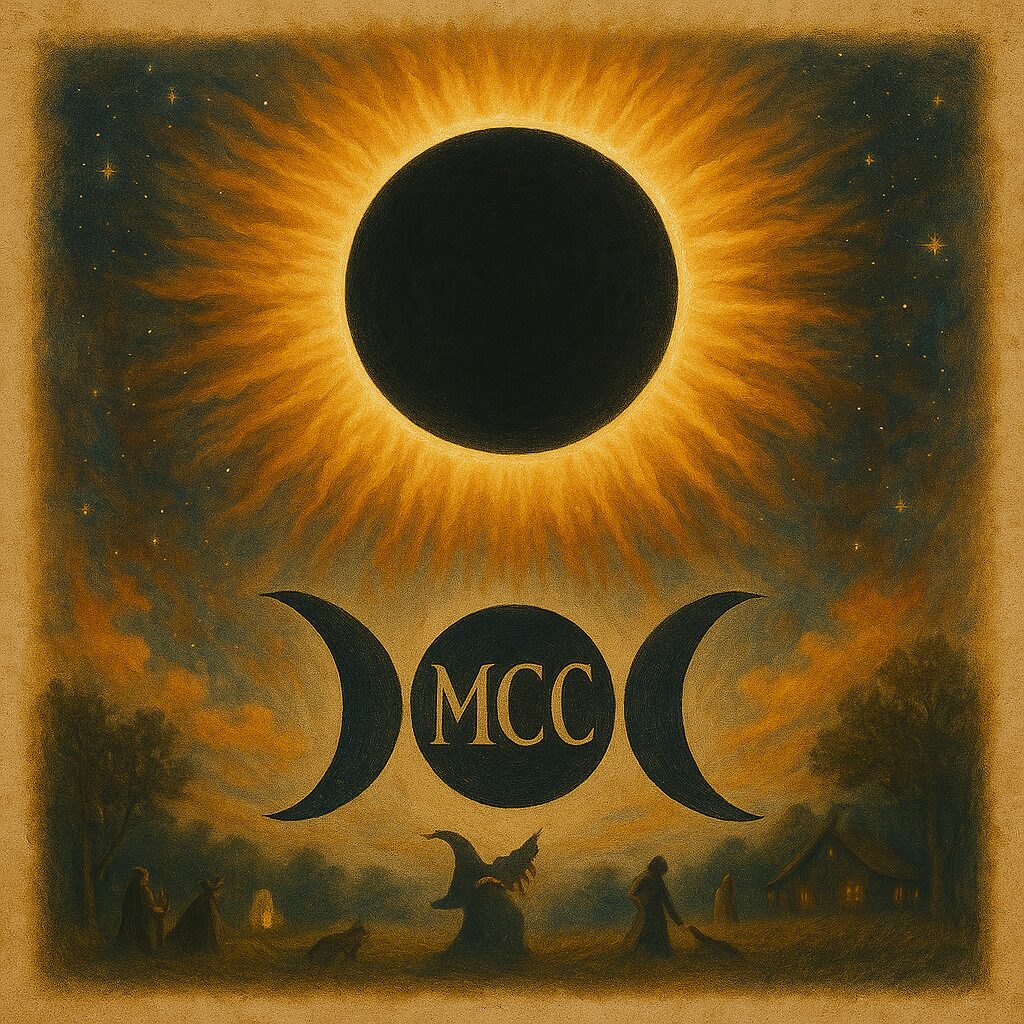Walking the Line Between Light and Dark
Shadow work is the alchemy of the self—the sacred act of meeting what hides behind our light. Every spell, every ritual, every moment of intention draws its power not only from illumination but from what we choose to face in the dark. It is a practice both psychological and spiritual, personal and universal. Without it, the Craft risks becoming hollow, distorted by denial or delusion. With it, we become whole.

The Dual Nature of the Craft
The witch’s path is inherently dualist: moon and sun, seed and bloom, creation and decay. To work magic is to move between opposites—to balance. Shadow work teaches that power cannot be sustained by light alone. The roots of our magic lie beneath the soil: our fears, griefs, desires, and buried memories. A witch who ignores these roots may grow quickly, but shallowly. A witch who tends them learns to draw strength from the unseen.

The Shadow in Spell and Ritual
Every act of magic mirrors our internal landscape. A spell for abundance, cast from unhealed scarcity, can twist toward obsession. A charm for protection, born of fear, can calcify into isolation. Rituals done without shadow awareness often feed illusion rather than transformation.
Shadow work restores integrity. Before lighting a candle or drawing a circle, we ask: What part of myself resists this work? What part fears the change I seek? The answers, though uncomfortable, purify the intent—and that purification is where true power begins.

Delusion, Denial, and the False Light
When the shadow is ignored, it does not vanish—it festers. It seeps into our practice as superiority, paranoia, or false visions cloaked in “light.” The witch who refuses to face their own darkness risks mistaking delusion for divinity.
Some call this spiritual bypassing. This is when magic becomes an escape from reality instead of a relationship with it. The temptation is strong—after all, false light feels cleaner, safer, easier to worship. But the brighter the illusion, the darker the denial beneath it.
We see this in the rise of self-anointed starseeds, intergalactic lightworkers, and other borrowed mythologies of transcendence. There is nothing wrong with dreaming among the stars, but many of these paths teach escape over embodiment—an obsession with “vibration,” “purity,” or “ascending” that denies the body, the grief, the soil. They forget that witchcraft is of the earth. The craft does not lift us out of pain—it teaches us to hold it, to transmute it. To become too “high vibrational” to grieve, rage, or doubt is not evolution—it is amputation.
Toxic positivity grows from this same poisoned root. It is the belief that darkness must be exiled, that discomfort means failure. But a witch who refuses sorrow or shadow burdens themselves with the endless labor of pretending. “Raising above” soon becomes a kind of curse—an invisible weight that demands perfection, serenity, and constant proof of worthiness. It traps the soul in a gilded cage of light, where authenticity withers.
To heal, we must first be honest. To ascend, we must first descend. The underworld is not punishment; it is initiation. Only by walking through our own darkness do we learn compassion, discernment, and true power. The light that emerges from such work is not the blinding glare of denial—it is the steady glow of a candle carried through the night, lit by truth, fed by shadow, and incapable of deceit.

Grounding and Integration
True grounding is not simply calming energy; it is embodiment. To be grounded is to stand where light and dark meet—the threshold of truth.
Both are needed for shadow work: the dark reveals what is hidden; the light makes it comprehensible. Together, they guide us toward transformation. In this space, the witch becomes a bridge between worlds—between what is and what could be.

Paths and Practices
Shadow work may take many forms:
- Journaling and dreamwork: Writing what surfaces without censorship. The subconscious speaks softly but clearly.
- Mirror rituals: Gaze upon yourself—literally or symbolically—and ask, What truth have I denied?
- Ancestral reflection: Shadows often pass through generations. Honoring them helps release inherited weight.
- Cleansing after confrontation: Once darkness is faced, it must be moved—through smoke, salt, water, or prayer.
The Gift of the Shadow
In the end, shadow work is not punishment—it is promise. To know one’s shadow is to know one’s depth. A witch who has faced their own darkness stands steady amid storms.
The shadow does not disappear; it becomes an ally, whispering warnings, sharpening discernment, and deepening empathy. Through it, we see the world as it truly is—beautiful, terrible, sacred, and whole.

